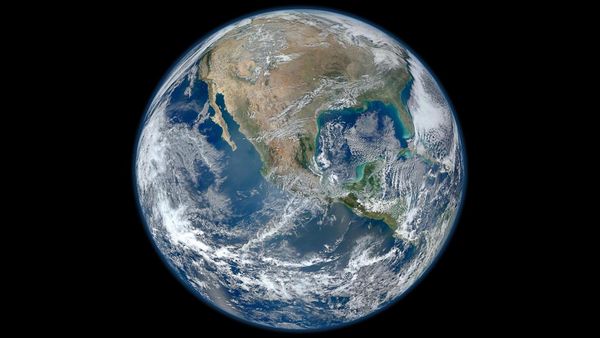Isaac Newton showed that, for spherical objects, you can make the simplifying assumption that all of the object's mass is concentrated at the center of the sphere. In the case of our planet, the center of the sphere would be Earth's center.
The following equation expresses the gravitational attraction that two spherical objects have on one another:
F = G(M1 x M2/R2)
- F is the force of attraction between them.
- G is the gravitational constant equal to 6.67259 x 10-11 m3/kg2.
- M1 and M2 are the two masses that are attracting each other.
- R is the distance separating the two objects.
Calculating Earth's Mass
Assume that Earth is one of the masses (M1) and a 1-kg sphere is the other (M2). The force between them is 9.8 kg x m/s2 — we can calculate this force by dropping the 1-kilogram sphere and measuring the acceleration that the Earth's gravitational field applies to it (9.8 m/s2).
The radius of the Earth is 6,400,000 meters (6,999,125 yards). If you plug all of these values in and solve for M1, you find that the mass of the Earth is 6,000,000,000, 000,000,000,000,000 kilograms (6 x 1024 kilograms, or 1.3 x 1025 pounds).



